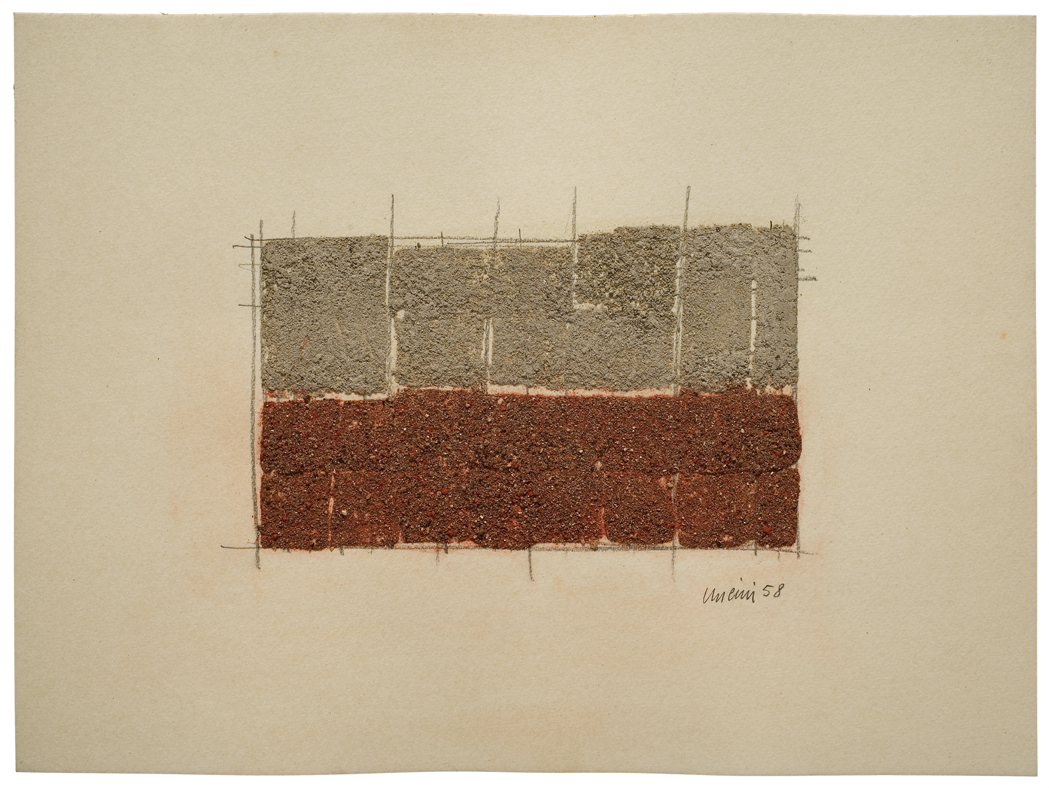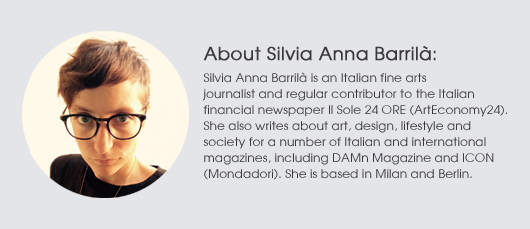
MILAN, Italy – In the last months, the market of Italian artist Giuseppe Uncini, born in 1929 in Fabriano and passed away in 2008 in Trevi, is going through a positive moment after years of ups and downs.
“Uncini’s work is not for easy appreciation in comparison to more traditional paintings or sculptures, and this is what has penalized him,” curator Annamaria Maggi explains. “The importance of his figure comes from having taken part in a revolution of the artistic language that was totally cleared from the contaminations of the last Informal painting. Uncini created a new language which was innovative and radical and used the means and the materials of constructions: concrete and iron.”
In the artistic practice of Uncini, in fact, the idea of building is fundamental. The artist observed the construction processes and applied them to his sculptures, which reveal such building processes on their surface and through the exhibition of structural elements.
After a difficult start, the market of Uncini experienced from the 1990s a sharp increase in interest and values. Until 2008, the year of his death, collectors showed great attention to Uncini and high prices were reached. From 2008 until a few months ago, however, there has been a decline in the interest, with little demand and many unsold works at auction. But now it seems that, in the widespread trend of rediscovery and re-evaluation of the Italian masters of the 1960s, Uncini is also enjoying this positive trend.
“Prices are in constant and rapid rise and the latest auction results are excellent,” Maggi comments. “His production is very wide and therefore also his prices vary according to the year, the media and the series.”
The most requested works are the “Cementarmati” series: works realized with iron, cement and metal mesh that reveal the geometric and space-related research of the artist and represent its initial production, from 1958-59 to 1963. These are the kind of works that marked the latest auction records: 295,800 euros at Dorotheum in Vienna last November; 183,750 euros at Il Ponte in Milan in December; and 127,500 euros at Sotheby’s in Milan in May.
“Despite the current positive market situation, Uncini remains a very underrated artist,” Maggi says, “especially for certain series of its production like the Ombre, works characterized by an extremely innovative and radical language, anticipating the proposals of Minimalism, that the market still does not properly appraise.”
In these works, created between 1972 and 1978, the massive architectural presence of the volumes dialogues with their shadows, which also become sculptural. The market of Uncini is also not yet developed at the global level, although it is already developed at the European level.
From April 28 to Sept. 15, Cardi Gallery in Milan dedicates to Giuseppe Uncini an exhibition curated by Maggi. The intention is to present an overview, albeit synthetic, of the entire production of the artist, from the early works, the “Cementarmati” series, to the most recent “Artifici.” The exhibition coincides with an important moment for the city of Milan like “Expo,” the universal exhibition from May 1 to Oct. 31.
“The decision to present Uncini during Expo Milano 2015 is his Italian character,” Maggi explains, “and his high historical and cultural value, which are to rediscover and revalue. A tribute to a great artist, one of the greatest Italian sculptors.”


